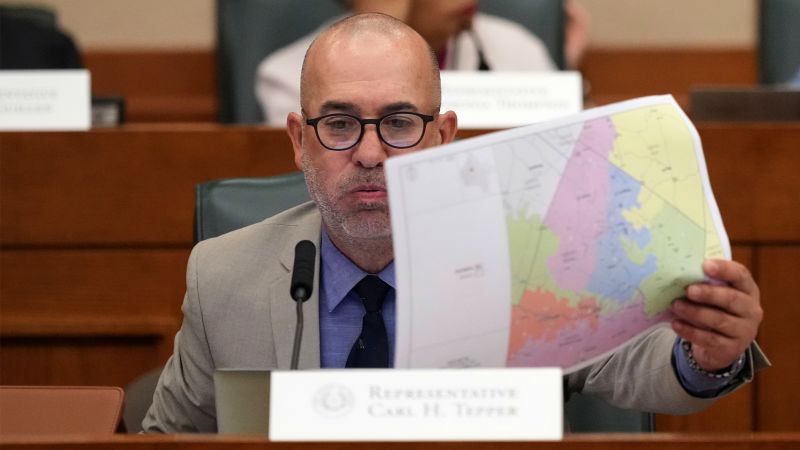The recent efforts by Texas Republicans to redraw congressional maps mid-decade have reignited discussions around gerrymandering and its implications for electoral fairness. In a bold move, the GOP has introduced a draft map that aims to add three new congressional districts, which are projected to have overwhelmingly supported President Donald Trump in the 2024 election. Should this proposal be enacted, it would mean that a staggering 79%—or 30 out of 38—of Texas congressional districts would align with Trump’s presidency, despite him only capturing 56% of the popular vote in the state. This shift would not only fortify the Republican majority in the state but would also put two newly elected House Democrats, who previously won in Trump districts, at increased risk in the 2026 elections.
The proposed redistricting is viewed as a strategic move by the GOP to safeguard their slim majority in the House of Representatives. Historically, the party has had difficulty maintaining control during midterm elections, and with projections suggesting Democrats are poised to gain seats, this aggressive redistricting could secure additional Republican clout. Analysts speculate that if the changes succeed, they could allow the GOP to flip up to five seats, significantly complicating any potential Democratic takeover of the chamber.
As these changes unfold, a familiar reaction has emerged from conservative circles, echoing a sentiment of whataboutism regarding past Democratic attempts at gerrymandering. Both parties indeed engage in the practice; however, the scale and effectiveness of these tactics can vary significantly. Republicans appear to derive more advantage from gerrymandering techniques, and it has often been suggested that they exploit the tools available more comprehensively than their Democratic counterparts.
A more nuanced debate surrounds whether recent gerrymandering efforts have ultimately created a leveling field in electoral outcomes. Some analysts assert that results from recent elections have shown a correlation between the percentage of seats won and the national popular vote, suggesting that neither party has an overwhelming edge in seat allocation based on vote totals alone. In the 2024 elections, for instance, Republicans garnered roughly 51.3% of the two-party vote and secured approximately 220 out of 435 seats, indicating a relatively close alignment in seat-to-vote ratios.
However, it would be simplistic to claim that fair representation is served merely by mirroring overall vote shares. Gerrymandering’s complexities mean that population distributions, voter concentration, and geographical boundaries play significant roles in the creation of electoral districts. The execution of a so-called “fair” map often necessitates creative strategies, particularly in competitive states where the goal is to capture narrow advantages for one party.
Critics warn that excessively aggressive gerrymandering could lead to detrimental outcomes for the party in control, especially if it results in a dilution of voter bases and an increased susceptibility to losing seats. Such dynamics may come into play for Republicans in Texas, particularly if they cannot sustain their 2024 gains among certain voter demographics.
This ongoing cycle of redistricting showcases not just the statistics but the subjective interpretation of what constitutes fairness in electoral representation. Tools like the Gerrymandering Project at Princeton University and PlanScore provide insights into the partisan bias of maps, highlighting a potential trend favoring Republican advantages in numerous districts while acknowledging limitations in the conclusions drawn from such data.
Further complicating the analysis is the influence of state legislative control over the redistricting processes. With Republicans holding power in more states, the opportunity for partisan gerrymandering has risen considerably. Historical precedents demonstrate that mid-decade redistricting efforts have typically emerged from Republican-led initiatives, reinforcing the notion that they are willing to push boundaries for electoral gain. This is compounded by the realization that Democrats, even if motivated to engage in similar tactics in states like California and New York, would face significant hurdles in both legal and political contexts.
The political landscape in Texas surrounding this mid-decade redistricting reflects a broader implications of partisan strategy in American politics, suggesting that Republicans are not only willing but eager to undertake measures that solidify their electoral foothold. Experts have noted that simply by evaluating the timing and motivations behind these map drawings, one can derive substantial insights into the partisan commitment to sustaining electoral advantages, underlining the ongoing arms race between parties in the pursuit of electoral supremacy.











